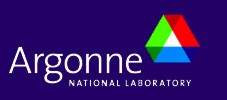Selected ATcT [1, 2] enthalpy of formation based on version 1.122p of the Thermochemical Network [3] This version of ATcT results was generated from an expansion of version 1.122o [4] to include an updated enthalpy of formation for Hydrazine. [5].
|
| Species Name |
Formula |
Image |
ΔfH°(0 K) |
ΔfH°(298.15 K) |
Uncertainty |
Units |
Relative
Molecular
Mass |
ATcT ID |
| Carbon monoxide | CO (g, singlet) | ![[C-]#[O+]](../images/1358.png) | -113.803 | -110.523 | ± 0.026 | kJ/mol | 28.01010 ±
0.00085 | 630-08-0*2 |
| Representative Geometry of CO (g, singlet) |
| | | spin ON spin OFF | | | Top contributors to the provenance of ΔfH° of CO (g, singlet)The 17 contributors listed below account for 90.4% of the provenance of ΔfH° of CO (g, singlet).
Please note: The list is limited to 20 most important contributors or, if less, a number sufficient to account for 90% of the provenance. The Reference acts as a further link to the relevant references and notes for the measurement. The Measured Quantity is normaly given in the original units; in cases where we have reinterpreted the original measurement, the listed value may differ from that given by the authors. The quoted uncertainty is the a priori uncertainty used as input when constructing the initial Thermochemical Network, and corresponds either to the value proposed by the original authors or to our estimate; if an additional multiplier is given in parentheses immediately after the prior uncertainty, it corresponds to the factor by which the prior uncertainty needed to be multiplied during the ATcT analysis in order to make that particular measurement consistent with the prevailing knowledge contained in the Thermochemical Network.
| Contribution
(%) | TN
ID | Reaction | Measured Quantity | Reference | | 62.8 | 1818.5 | C (graphite) + CO2 (g) → 2 CO (g) | ΔrG°(1165 K) = -33.545 ± 0.058 kJ/mol | Smith 1946, note COf, 3rd Law | | 4.4 | 1764.7 | C (graphite) + O2 (g) → CO2 (g) | ΔrH°(298.15 K) = -393.464 ± 0.024 kJ/mol | Hawtin 1966, note CO2e | | 3.6 | 1814.7 | CO2 (g) → CO (g) + O+ (g) | ΔrH°(0 K) = 19.0701 ± 0.0010 (×1.114) eV | Liu 2003, note unc | | 3.1 | 1816.4 | CO (g) + 1/2 O2 (g) → CO2 (g) | ΔrH°(303.15 K) = -282.974 ± 0.116 kJ/mol | Rossini 1931a, Rossini 1931b, Rossini 1939, note CO | | 2.3 | 1818.1 | C (graphite) + CO2 (g) → 2 CO (g) | ΔrG°(1236.8 K) = -46.195 ± 0.3 kJ/mol | Peters 1958, note COe, 3rd Law | | 1.9 | 1816.6 | CO (g) + 1/2 O2 (g) → CO2 (g) | ΔrH°(293.15 K) = -283.036 ± 0.146 kJ/mol | Fenning 1933, note COb | | 1.8 | 1816.3 | CO (g) + 1/2 O2 (g) → CO2 (g) | ΔrG°(1173 K) = -180.655 ± 0.150 kJ/mol | Caneiro 1981, note COc | | 1.7 | 1764.5 | C (graphite) + O2 (g) → CO2 (g) | ΔrH°(298.15 K) = -393.468 ± 0.038 kJ/mol | Fraser 1952, note CO2f | | 1.7 | 1764.4 | C (graphite) + O2 (g) → CO2 (g) | ΔrH°(298.15 K) = -393.462 ± 0.038 kJ/mol | Lewis 1965, note CO2d | | 1.2 | 1764.9 | C (graphite) + O2 (g) → CO2 (g) | ΔrH°(298.15 K) = -94.051 ± 0.011 kcal/mol | Prosen 1944a, Cox 1970, NBS TN270, NBS Tables 1989 | | 1.1 | 1815.5 | CO2 (g) → [CO]+ (g) + O (g) | ΔrH°(0 K) = 19.4687 ± 0.0010 (×1.957) eV | Liu 2003, note unc | | 1.0 | 1810.2 | CO (g) → C+ (g) + O (g) | ΔrH°(0 K) = 22.3713 ± 0.0015 eV | Ng 2007 | | 0.8 | 1764.6 | C (graphite) + O2 (g) → CO2 (g) | ΔrH°(298.15 K) = -393.462 ± 0.056 kJ/mol | Hawtin 1966, note CO2e | | 0.6 | 1764.2 | C (graphite) + O2 (g) → CO2 (g) | ΔrH°(298.15 K) = -393.498 ± 0.062 kJ/mol | Dewey 1938, note CO2, Rossini 1938, note CO2c | | 0.6 | 1764.3 | C (graphite) + O2 (g) → CO2 (g) | ΔrH°(303.15 K) = -393.447 ± 0.064 kJ/mol | Jessup 1938, note CO2a, Rossini 1938, note CO2c | | 0.5 | 1817.3 | CO (g) + H2O (g) → CO2 (g) + H2 (g) | ΔrG°(893 K) = -6.369 ± 0.283 kJ/mol | Meyer 1938, note COi, 3rd Law | | 0.5 | 1264.4 | NNO (g) + CO (g) → CO2 (g) + N2 (g) | ΔrH°(293.15 K) = -365.642 ± 0.243 kJ/mol | Fenning 1933, note N2Oa |
| Top 10 species with enthalpies of formation correlated to the ΔfH° of CO (g, singlet) | Please note: The correlation coefficients are obtained by renormalizing the off-diagonal elements of the covariance matrix by the corresponding variances.
The correlation coefficient is a number from -1 to 1, with 1 representing perfectly correlated species, -1 representing perfectly anti-correlated species, and 0 representing perfectly uncorrelated species.
| Correlation
Coefficent
(%) | Species Name | Formula | Image | ΔfH°(0 K) | ΔfH°(298.15 K) | Uncertainty | Units | Relative
Molecular
Mass | ATcT ID | | 100.0 | Carbon monoxide | CO (g, triplet) | ![[C-]#[O+]](../images/1268.png) | 465.579 | 469.286 | ± 0.026 | kJ/mol | 28.01010 ±
0.00085 | 630-08-0*1 | | 100.0 | Carbon monoxide | CO (g) | ![[C-]#[O+]](../images/32.png) | -113.803 | -110.523 | ± 0.026 | kJ/mol | 28.01010 ±
0.00085 | 630-08-0*0 | | 99.0 | Carbon monoxide cation | [CO]+ (g) | ![[C]#[O+]](../images/228.png) | 1238.306 | 1241.586 | ± 0.026 | kJ/mol | 28.00955 ±
0.00085 | 12144-04-6*0 | | 35.4 | Carbon dioxide | CO2 (g) |  | -393.108 | -393.474 | ± 0.015 | kJ/mol | 44.00950 ±
0.00100 | 124-38-9*0 | | 30.5 | Carbon dioxide cation | [CO2]+ (g) | =O](../images/316.png) | 936.093 | 936.927 | ± 0.017 | kJ/mol | 44.00895 ±
0.00100 | 12181-61-2*0 | | 30.1 | Ketene | CH2CO (g) |  | -45.35 | -48.47 | ± 0.12 | kJ/mol | 42.0367 ±
0.0016 | 463-51-4*0 | | 30.1 | Ketene | CH2CO (g, singlet) |  | -45.35 | -48.47 | ± 0.12 | kJ/mol | 42.0367 ±
0.0016 | 463-51-4*2 | | 30.1 | Ketene cation | [CH2CO]+ (g) | ![C=C=[O+]](../images/957.png) | 882.22 | 879.05 | ± 0.12 | kJ/mol | 42.0361 ±
0.0016 | 64999-16-2*0 | | 22.5 | Carbon atom | C (g) | ![[C]](../images/16.png) | 711.397 | 716.882 | ± 0.047 | kJ/mol | 12.01070 ±
0.00080 | 7440-44-0*0 | | 22.5 | Carbon atom | C (g, triplet) | ![[C]](../images/1037.png) | 711.397 | 716.882 | ± 0.047 | kJ/mol | 12.01070 ±
0.00080 | 7440-44-0*1 |
| Most Influential reactions involving CO (g, singlet)Please note: The list, which is based on a hat (projection) matrix analysis, is limited to no more than 20 largest influences.
| Influence
Coefficient | TN
ID | Reaction | Measured Quantity | Reference | | 1.000 | 1819.1 | CO (g, singlet) → CO (g) | ΔrH°(0 K) = 0 ± 0 cm-1 | triv | | 0.999 | 1820.1 | CO (g, singlet) → CO (g, triplet) | ΔrH°(0 K) = 48432.58653 ± 0.00006 cm-1 | de Nijs 2011, Velichko 2012, note unc | | 0.000 | 1820.2 | CO (g, singlet) → CO (g, triplet) | ΔrH°(0 K) = 48432.65 ± 0.1 cm-1 | Field 1972, Field 1971, est unc | | 0.000 | 1820.5 | CO (g, singlet) → CO (g, triplet) | ΔrH°(0 K) = 48518 ± 420 cm-1 | Ruscic W1RO | | 0.000 | 1820.3 | CO (g, singlet) → CO (g, triplet) | ΔrH°(0 K) = 48484 ± 450 cm-1 | Ruscic G4 | | 0.000 | 1820.4 | CO (g, singlet) → CO (g, triplet) | ΔrH°(0 K) = 48485 ± 455 cm-1 | Ruscic CBS-n |
|
|
|
References
|
|
1
|
|
B. Ruscic, R. E. Pinzon, M. L. Morton, G. von Laszewski, S. Bittner, S. G. Nijsure, K. A. Amin, M. Minkoff, and A. F. Wagner,
Introduction to Active Thermochemical Tables: Several "Key" Enthalpies of Formation Revisited.
J. Phys. Chem. A 108, 9979-9997 (2004)
[DOI: 10.1021/jp047912y]
|
|
2
|
|
B. Ruscic, R. E. Pinzon, G. von Laszewski, D. Kodeboyina, A. Burcat, D. Leahy, D. Montoya, and A. F. Wagner,
Active Thermochemical Tables: Thermochemistry for the 21st Century.
J. Phys. Conf. Ser. 16, 561-570 (2005)
[DOI: 10.1088/1742-6596/16/1/078]
|
|
3
|
|
B. Ruscic and D. H. Bross,
Active Thermochemical Tables (ATcT) values based on ver. 1.122p of the Thermochemical Network (2020); available at ATcT.anl.gov |
|
4
|
|
P. B. Changala, T. L. Nguyen, J. H. Baraban, G. B. Ellison, J. F. Stanton, D. H. Bross, and B. Ruscic,
Active Thermochemical Tables: The Adiabatic Ionization Energy of Hydrogen Peroxide.
J. Phys. Chem. A 121, 8799-8806 (2017)
[DOI: 10.1021/acs.jpca.7b06221] (highlighted on the journal cover)
|
|
5
|
|
D. Feller, D. H. Bross, and B. Ruscic,
Enthalpy of Formation of N2H4 (Hydrazine) Revisited.
J. Phys. Chem. A 121, 6187-6198 (2017)
[DOI: 10.1021/acs.jpca.7b06017]
|
|
6
|
|
B. Ruscic,
Uncertainty Quantification in Thermochemistry, Benchmarking Electronic Structure Computations, and Active Thermochemical Tables.
Int. J. Quantum Chem. 114, 1097-1101 (2014)
[DOI: 10.1002/qua.24605]
|
|
|
|
Formula
|
|
The aggregate state is given in parentheses following the formula, such as: g - gas-phase, cr - crystal, l - liquid, etc.
|
|
|
Uncertainties
|
The listed uncertainties correspond to estimated 95% confidence limits, as customary in thermochemistry (see, for example, Ruscic [6]).
Note that an uncertainty of ± 0.000 kJ/mol indicates that the estimated uncertainty is < ± 0.0005 kJ/mol.
|
|
|
Website Functionality Credits
|
The reorganization of the website was developed and implemented by David H. Bross (ANL).
The find function is based on the complete Species Dictionary entries for the appropriate version of the ATcT TN.
The molecule images are rendered by Indigo-depict.
The XYZ renderings are based on Jmol: an open-source Java viewer for chemical structures in 3D. http://www.jmol.org/.
|
|
|
Acknowledgement
|
|
This work was supported by the U.S. Department of Energy, Office of Science, Office of Basic Energy Sciences, Division of Chemical Sciences, Geosciences and Biosciences under Contract No. DE-AC02-06CH11357.
|
|
Page generated: 04/24/2025
|







